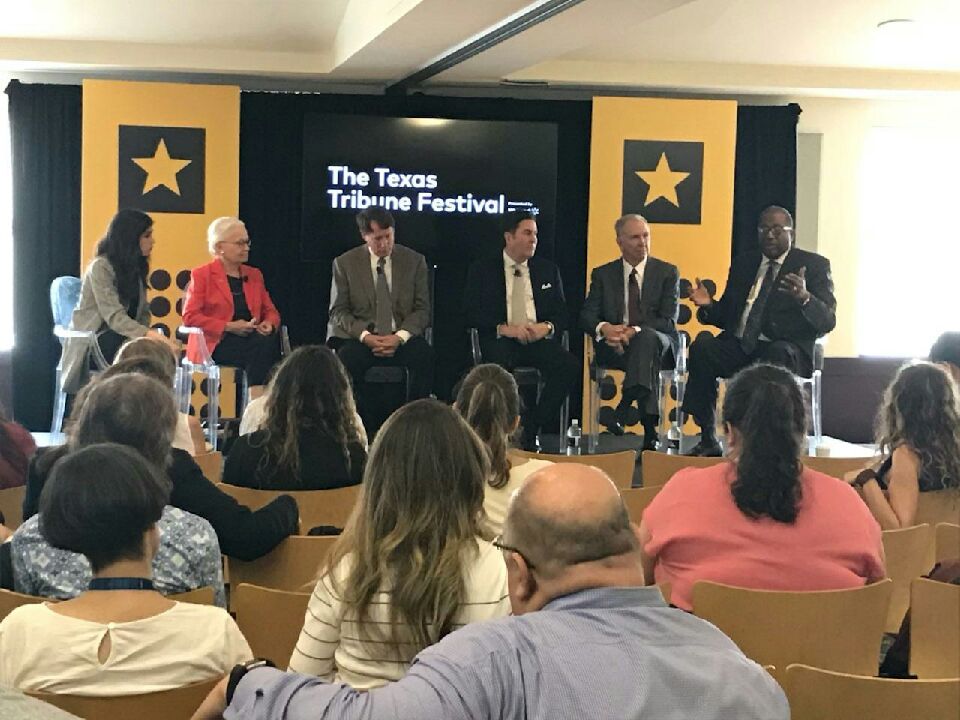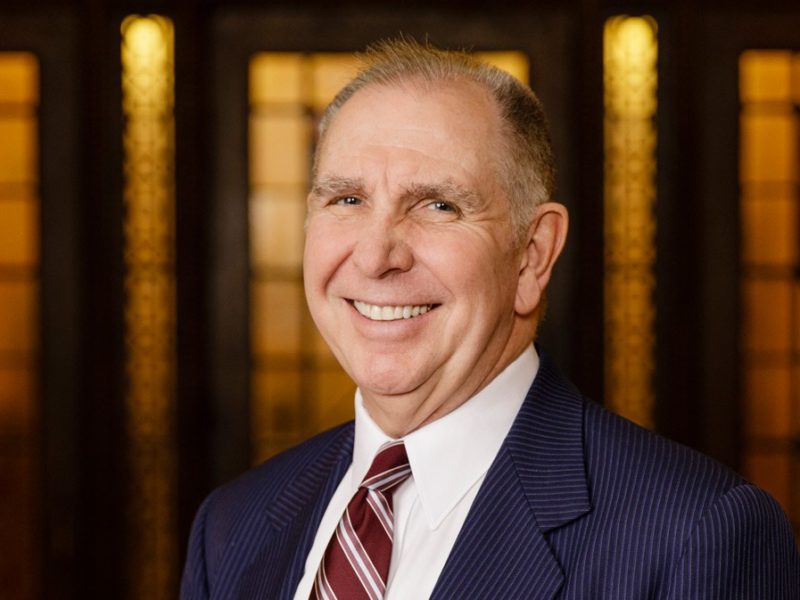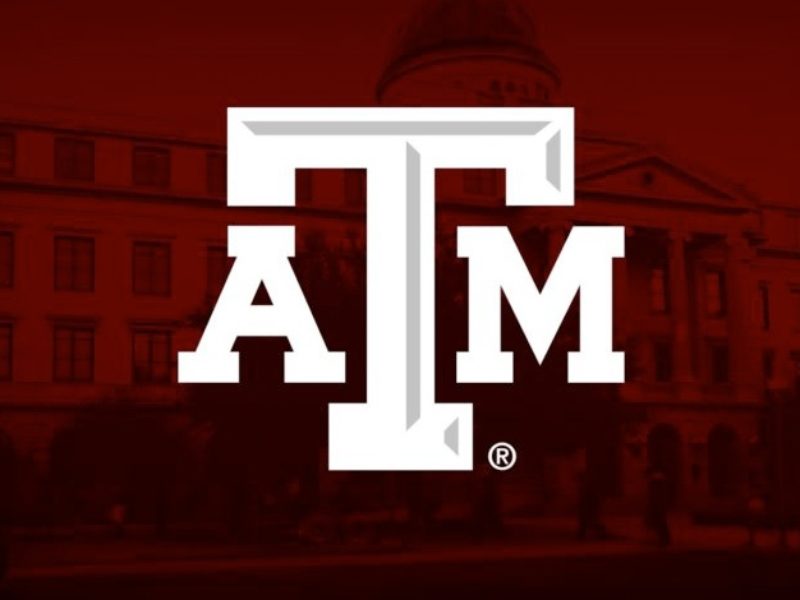President Young At TribFest: Outreach, Partnerships Key To Manage Costs, Ensure Student Success
Texas A&M University’s innovative approaches are helping ensure student access to higher education and academic success amid rising costs and less state funding, university President Michael K. Young told attendees at The Texas Tribune Festival this morning during a panel session about the economics of higher education.
It was a rare gathering of leaders from some of the state’s largest universities discussing funding and access issues with State Sen. Royce West, a Democrat from Dallas who serves as chairman of the higher education committee. Other panelists included Texas State University System Chancellor Brian McCall, Texas Tech University System Chancellor Robert Duncan, and The University of Texas at El Paso President Diana Natalicio.
The panelists agreed that many students in the Lone Star State are entering college ill-prepared for the rigors of university curricula. Young said that partnerships with school districts and community colleges are key to helping ease that transition.
Young pointed to an outreach program managed by the Texas A&M College of Education & Human Development that is having what he described as extraordinary results at Keller Elementary in Brownsville, Texas, where A&M researchers focused on student literacy while working with educators to help teach students in the high-poverty area to recognize underlying text structure—how information within a written text is organized.
After the first academic year of implementation, Keller showed an almost double-digit jump in test scores, moved to a 100 percent pass rate in all subject areas, and was awarded six gold stars for performance.
Young said he hopes the program spreads to other school districts around Texas and added that partnerships with community colleges, including programs where its students can attend university classes to prepare for transferring, are critical to prepare students for university life.
In discussing the costs versus the value of higher education, Young said there is no doubt the benefits of college outweigh the costs. He referred to data that show not only the earnings of college graduates over a lifetime significantly higher than workers with only high school diplomas, but many other facets of life including retirement, home ownership and the likelihood of drug and alcohol addiction all have better outcomes for college grads.
Young said it is increasingly challenging to meet the growing demand for college-educated workers, especially when students and their families, even those who receive financial aid, are still unable to afford college.
A student’s average financial aid package at Texas A&M is $16,000 per year and, said Young, for some students, that might not be enough since many are not only supporting themselves, but also family members. He said if a student’s income is important to family members, time spent in school may cause a loss of income which can be difficult to manage.
The most expensive thing that can happen, Young said, is when a student starts college but then can’t finish – an investment lost.
He noted that Texas A&M has the best four-year graduation rate in the state at 4.1 years.
The Chronicle of Higher Education ranked Texas A&M No. 1 in the nation for six-year graduation rates.
Young said students should consider loans to invest in their futures.
“We have cultural hesitation to borrow money. But it’s a tremendously good investment if it is in the right amount,” he said, adding that there is a fair chunk of financial aid left on the table in Texas, so colleges need to do a better job of helping students to attain it.
Increasingly students are getting jobs on campus, which Young said is enormously beneficial both to the students and the university. “If they work up to 15 hours a week, they get better grades and are more likely to graduate on time.”
The panelists also agreed that partnering with Texas businesses is important to ensure college graduates stay and work in Texas.
“We need to partner with business community leadership in higher education; that is powerful and essential,” Young said.
Panelists discussed eroding government support for higher education, with Young noting that most are trying to do more with less.
He said that performance funding, which connects state financial support of universities to institutional performance, doesn’t fully work. “All the data show that performance funding is counterproductive. It only works when they get additional funding,” Young said.
Last year’s failed overhaul of the higher education funding structure in Texas has put pressure on legislators to find better ways to disburse nearly $3 billion annually to schools through formulas and direct appropriations.
Public colleges in Texas receive 30 to 31 percent of their funding from the state. The panelists agreed that more funding needs to go to education, but it is clear that competing priorities make it difficult to appropriate the funds that are needed for growing demands on the state’s education system.
The panel was moderated by The Texas Tribune’s higher education reporter Shannon Najmabadi and attended by more than 125 festival goers at Crail Hall in Austin’s St. David’s Episcopal Church.
Media contact: Lesley Henton, lshenton@tamu.edu.





